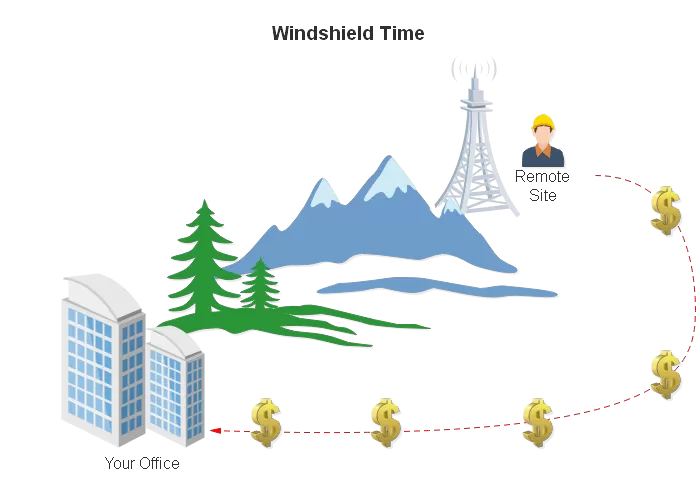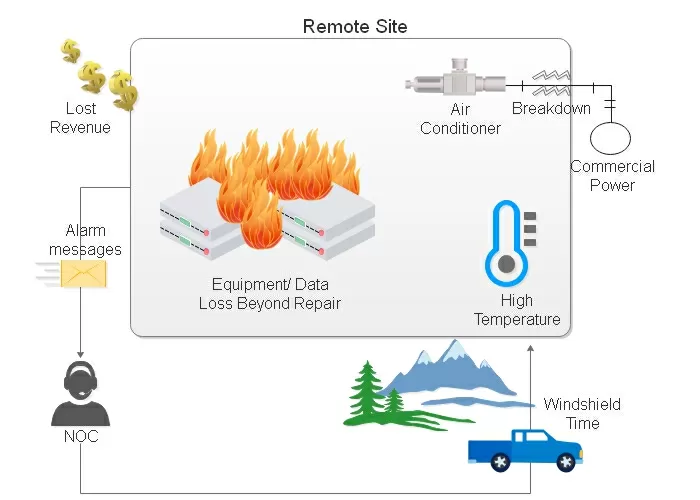Download our free Monitoring Fundamentals Tutorial.
An introduction to Monitoring Fundamentals strictly from the perspective of telecom network alarm management.
1-800-693-0351
Have a specific question? Ask our team of expert engineers and get a specific answer!
Sign up for the next DPS Factory Training!

Whether you're new to our equipment or you've used it for years, DPS factory training is the best way to get more from your monitoring.
Reserve Your Seat TodayBefore the rise of modern IP networks (and the internet connecting them), RTUs were an absolute necessity for remote site monitoring.
That's because equipment of that era communicated status information almost exclusively via contact closures. If a device was overheating, experiencing high radio noise, or having any other specific problem, it would latch a corresponding relay.
That latch went nowhere on its own. It couldn't be natively routed anywhere. You had to have a device at the site to monitor that relay. That device was a "Remote Telemetry Unit" (also called a "Remote Terminal Unit").
Recently, however, the "Internet of Things" (IoT) became a major force in consumer homes worldwide. That's led to a perception that the same shift should be made instantly in telecom networks at large companies and agencies.
A consumer home is very different from a large data center. A large data center is very different from a remote telecom site that takes hours of "windshield time" (driving time) to reach and can face very harsh conditions.

Certainly, IoT has a role to play. Still, don't be too quick to eliminate field-proven RTUs from your strategy. They bring tremendous value to your monitoring system when used correctly.
For that reason, let's take a look at 3 major reasons to use traditional RTUs in our new "smart" world of IoT:
Especially if you're a younger employee or focused mainly on the "corporate IT" world (rather than very remote telecom sites), contact closures may seem like "an old thing."
Digital contact closures absolutely are older, but that doesn't mean you can ignore them. Nor should you.
No network was built instantly. It evolved over time. You'll have some older gear, and you must monitor it.
What's more, the simplicity of contact closures and traditional analog circuits is actually a strength for your monitoring reliability. You can't get an IP address or other setting wrong. There are fewer layers involved, which means there are fewer opportunities for a costly failure.
That's why you'll often see devices with both protocol communications and contact closures. A common hybrid strategy is to use SNMP, Modbus, or another protocol to output hundreds (or thousands) of detailed data points. That same device will then have a handful of contact closures to summarize alarm status as "Minor", "Major", "Critical", & "Status" severities.
So, even as the world marches forward, don't be too eager to throw out the past. Every technology has something to offer you. It's your job to weave them all together into a cohesive monitoring system. You can't afford to ignore a major piece of the puzzle just because you don't yet fully understand it.
As much as people tend to focus on a box's purchase price, installation deserves at least as much (if not more) attention.
How much time does each new hardware design and interface cost your team? How much time is spent fumbling through new and different menus?
As an example, consider a site similar to the one pictured above. At this site, you want to monitor temperature, humidity, a door, generator fuel level, rectifier voltage, and battery voltage. Sure, you could find small IoT devices to monitor these things, each with their RJ-45 LAN port and web interface.
Six sensors is a small enough number that your small army of IoT boxes might be priced under a small/medium RTU.
But now, think about what happens when those boxes arrive on your dock.
Instead of installing one RTU and then wiring six traditional sensors to it, you'll have to set up each IoT sensor individually. The time it takes to do this will likely gobble up all of your savings and put you in negative territory.
Even if you make it through the initial install, every configuration change, spare replacement, or new hire training will be multiplied by your device count.
Every single box you add to any of your system carries a cost in installation, maintenance, end-of-life replacement and training. Don't inflate your deployment carelessly.
Network monitoring is not a place where "sexy" matters. Don't be too quick to focus on new designs at the expense of proven ones.

Consider two scenarios:
As I hope you can appreciate, the second example above isn't as "pretty", perhaps, but it protects your organization and your customers (and your job!) from harm at a critical time. Which system would you rather have?
If you're working on a monitoring project, why not talk to someone who's done it hundreds of times before? Even if you "done monitoring before", you'll always learn at least a few helpful tips. I can help you to balance new IoT concepts with traditional telecom monitoring best practices.
Give DPS a call at 1-800-693-0351 or send me a quick online message. I'll talk with you about your project and give you a free application drawing of what I recommend.